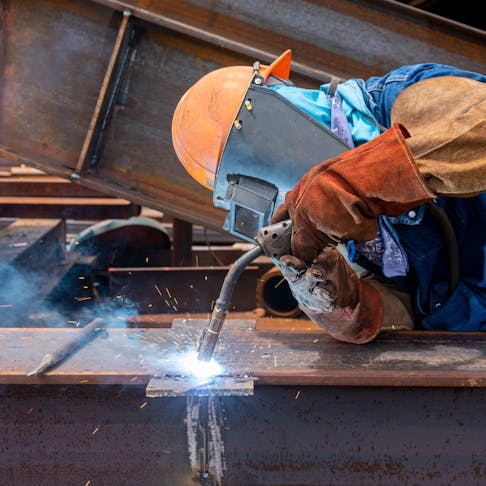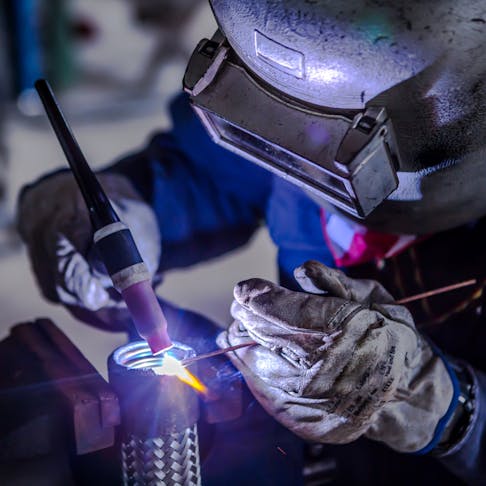Why a Welding WPS is Crucial: Enhancing Uniformity and Conformity
Why a Welding WPS is Crucial: Enhancing Uniformity and Conformity
Blog Article
The Ultimate Overview to Welding WPS Procedures: An Extensive Introduction for Welders
In the intricate globe of welding, Welding Procedure Requirements (WPS) offer as the backbone of guaranteeing quality, consistency, and safety in welding operations (welding WPS). As we dive right into the numerous components of a WPS and check out the ins and outs of certification and certification, we will uncover the vital duty these treatments play in the realm of welding.
Significance of WPS Procedures
Understanding the relevance of Welding Procedure Specs (WPS) procedures is crucial for making sure the top quality and stability of welded structures. WPS procedures function as a roadmap for welders, detailing the essential actions, specifications, and materials called for to accomplish an audio weld. By adhering to WPS standards, welders can guarantee uniformity in their work, resulting in structurally audio and reputable welds.
One of the main reasons that WPS treatments are crucial is their role in keeping weld quality and stability. Complying with the defined welding parameters and techniques detailed in the WPS helps stop problems such as porosity, breaking, or insufficient fusion, which can compromise the stamina and longevity of the weld. Furthermore, WPS treatments are crucial for making certain compliance with sector standards and codes. By following well established WPS guidelines, welders can demonstrate that their job meets the necessary demands for safety and security and quality, giving assurance to clients, examiners, and regulatory bodies. In essence, the relevance of WPS treatments can not be overemphasized, as they are basic to accomplishing constant, high-grade welds that satisfy industry requirements and specs.

Elements of a WPS
A Welding Procedure Specification (WPS) commonly consists of vital components that information the details needs for performing a weld, making certain consistency and quality in the welding procedure. The key parts of a WPS include vital variables such as base steels, filler metals, interpass and preheat temperature levels, welding procedures, protecting gases, welding settings, and post-weld warmth therapy demands.
Base steels describe the materials being joined, while filler metals are made use of to fill the gap in between the base steels during welding. Preheat and interpass temperature levels are critical for regulating the heat input and avoiding concerns like splitting or distortion. The welding procedure details the specific strategy to be used, whether it's gas steel arc welding (GMAW), protected steel arc welding (SMAW), or an additional technique. Shielding gases protect the weld swimming pool from climatic contamination. Welding placements specify the alignments in which welding can be performed. Post-weld heat therapy may be needed to relieve anxieties and boost the weld's buildings. A comprehensive understanding of these parts is essential for producing a effective and detailed WPS.

Qualification and Qualification
Having developed the crucial elements of a Welding Procedure Spec (WPS), the emphasis currently changes towards the vital elements of credentials and qualification in welding methods.

Qualification, on the various other hand, is the formal acknowledgment of a welder's qualifications by an appropriate accreditation body or company. Welding certifications are normally based upon the certain welding procedures, materials, and settings a welder is certified to function with. Holding a legitimate welding qualification shows that a welder meets sector criteria and is skilled to do welding jobs to the needed specifications.
Developing a WPS
To establish a Welding Treatment Specification (WPS) that meets industry standards, mindful consideration of welding processes, materials, and functional parameters is essential. The very first step in producing a WPS is to identify the welding process to be used, such as gas steel arc welding (GMAW) or protected steel arc welding (SMAW)

Executing and Keeping An Eye On WPS
Upon finalizing the thorough Welding Treatment Specification (WPS) that thoroughly information welding processes, materials, functional specifications, and top quality assurance measures, the emphasis shifts to effectively applying and keeping track of the well-known procedures. Implementation includes guaranteeing that all welders involved in the task are familiar with the WPS and follow it diligently throughout the welding procedure. Efficient execution and tracking of the WPS are vital for guaranteeing the honesty, stamina, and safety and security of the welded joints, inevitably contributing to the general success of the welding task.
Final Thought
Finally, understanding and following Welding Treatment Requirements (WPS) is crucial for welders to ensure quality, uniformity, and security in their job. By understanding the parts of a WPS, obtaining appropriate certifications and certifications, developing thorough procedures, and implementing and checking them effectively, welders can improve their abilities and effectiveness in welding techniques. Adhering to WPS treatments is necessary for creating high-grade welds and meeting sector standards.
In the intricate world of welding, Welding Procedure Specifications (WPS) serve as the backbone of making certain high quality, consistency, and security in welding operations. The welding procedure lays out the certain strategy to be made use of, whether it's gas metal arc welding (GMAW), protected steel arc welding (SMAW), or one more method.To develop a Welding Procedure Specification (WPS) that satisfies market requirements, careful click here for info consideration of welding procedures, products, and operational criteria is important. The initial action in developing a WPS is to recognize the welding procedure to be made use of, such as gas steel arc welding (GMAW) or shielded steel arc welding (SMAW)Upon wrapping up the thorough Welding Treatment Specification (WPS) that meticulously information welding procedures, materials, functional parameters, and quality guarantee measures, the emphasis shifts to successfully carrying out and keeping an eye on the well-known treatments.
Report this page